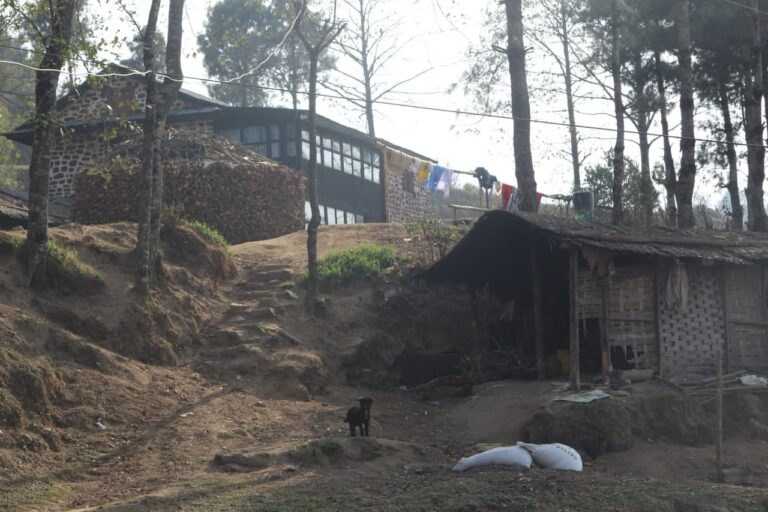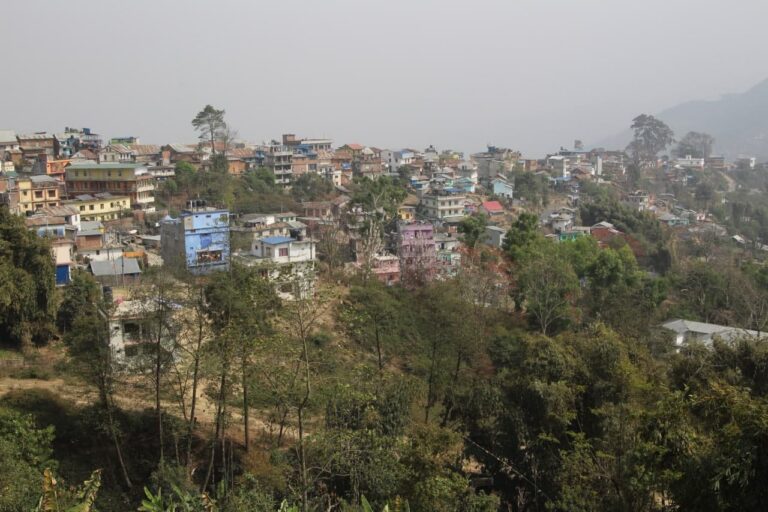
In the past, work has often taken me to the eastern hills of Nepal – mainly upward from Dharan up till Hile. This time, in March, I had another opportunity to head there – but this time with my parents. Although the route we followed was the same, interestingly new insight was added.
These new insights compel me to pen down the journey.
For my father, whose maternal village used to be up in the hills near the border of Sankhuwasabha and Dhankuta Districts, his memories were vivid. Back in the day, he and his mother used to hike the entirety of the journey up till their village. The journey would take three days then.
Today, roads have almost reached his village – and the three day trek has been reduced to a five hour journey (four hours drive and an hour’s walk).
Day 1: Exploring Dharan and its surrounding areas:
Dharan is my hometown, therefore I feel ridiculous writing about it from a tourist’s perspective – however, I will make the effort for those who arrive on this article to know about Dharan.
For my part, usually on the first day, I go exploring towards the nearby Bijaypur hills with the famous temples – Budha Subba Temple, Danta Kali and Pindeshwori. These three are a must visit and is advised to go either in the morning or in the evening.
The Budha Subba Temple has a unique history. As per legend, Budha Subba and his sister were shooting at crows with a slingshot. When aiming at a crow atop a bamboo tip – Budha Subba missed. From then on, Budha Subba gave up hunting and began meditating, therefore giving rise to the shrine.
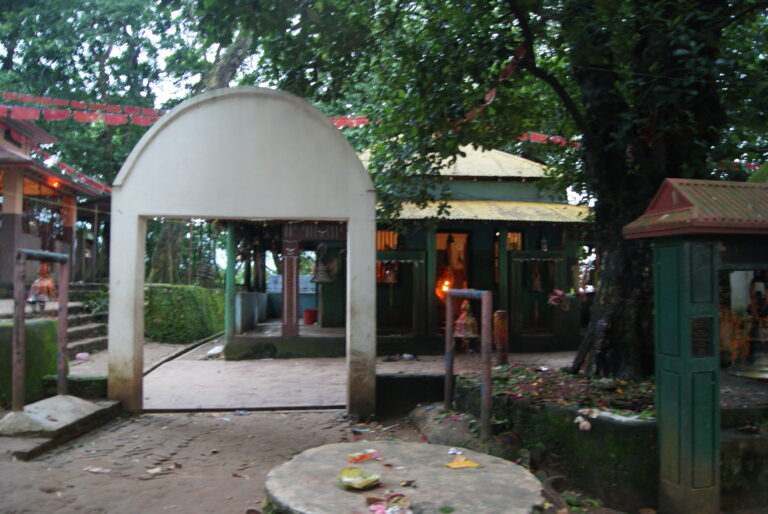
The legend is supported by the lack of bamboo tips in the bamboo trees within the temple dill date, and crows aren’t in sight anywhere too.
From Budha Subba, one can visit the Danta Kali Temple. It is believed that when an enraged Lord Shiva carried Goddess Sati during her self-immolation, her tooth had fallen at the spot where the temple is situated.
After a relaxed morning of visiting the temples, in the afternoon one can visit the nearby Baraha Chettra Temple. Situated an hour’s drive away from Dharan, the temple is highly revered and is one of the char dhams of Nepal. Besides religious history, the surrounding areas of the temple with the mighty Sapta Koshi flowing besides it and the nearby hills make it a worthwhile visit.
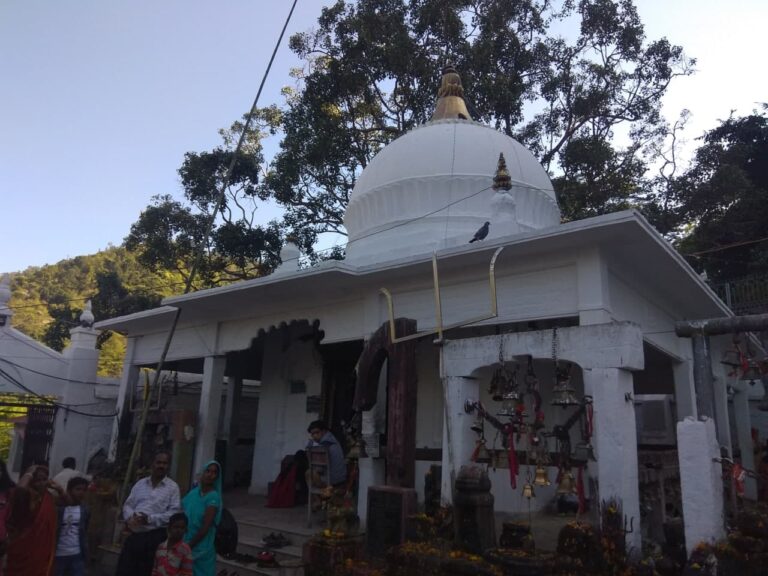
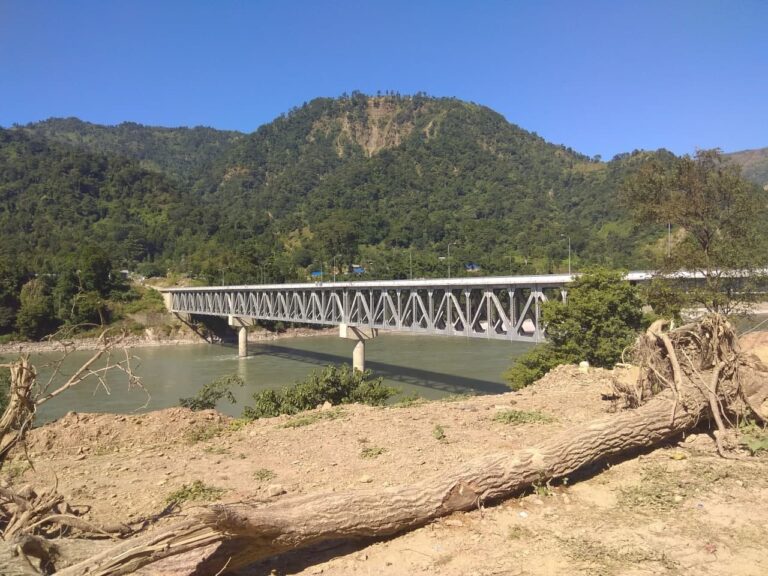
In the evening we can explore the town area – one can try their locally famous “Aloo Nimkin”, amidst other things. For a little night life, Bagarkot is recommended – it is usually abuzz with people from all walks of life.
Day 2: Dhankuta, Hile & Basantapur
Early next morning, my parents and I headed towards the hills – we passed by Bhedetar – the famous escape for people from Dharan, Itahari, and even Biratnagar during extremely hot days. The weather was pleasant, and we stuck around for a cup of tea as we watched vegetable vendors display their produce – from fresh spinach to red hot chillies, the assortment was huge.
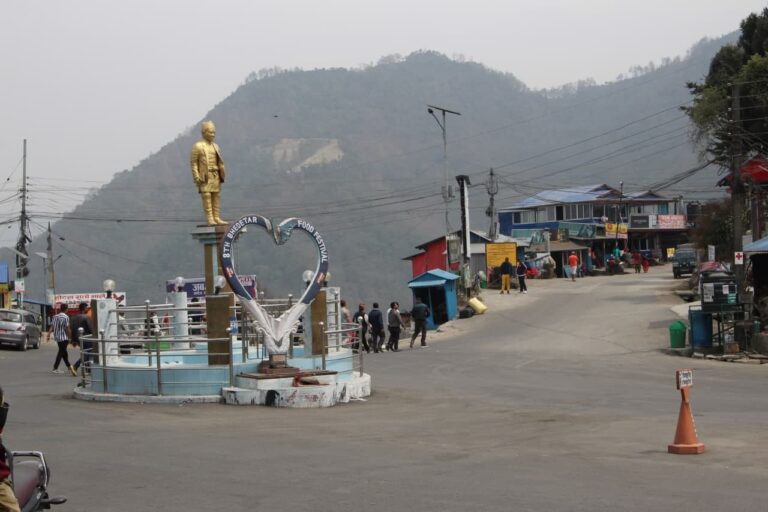
Enjoying the breeze, we rolled down our windows as we headed towards Tamar River. Mid-way my father started talking about the journey he used to make on foot decades ago. “We had to cross this river so many times”, he said pointing to the Leuti River. “Sometimes the current would be strong, I would have to hold my mother tight to prevent her from slipping”, he added remembering his own youthful days.
“Did the walking route follow the same highway?”I asked him.
“Not in its entirety. There are some parts which are shared, some parts we would have to traverse entirely differently”, he answered.
Just before reaching Tamor, he showed a beaten and unused path.
“From here, we would have to head this way, and cross through several villages”.
At Tamor River, we stayed a while to admire the natural beauty – the sturdy bridge, the gushing water, and the small settlement in a picturesque background did inspire admiration.
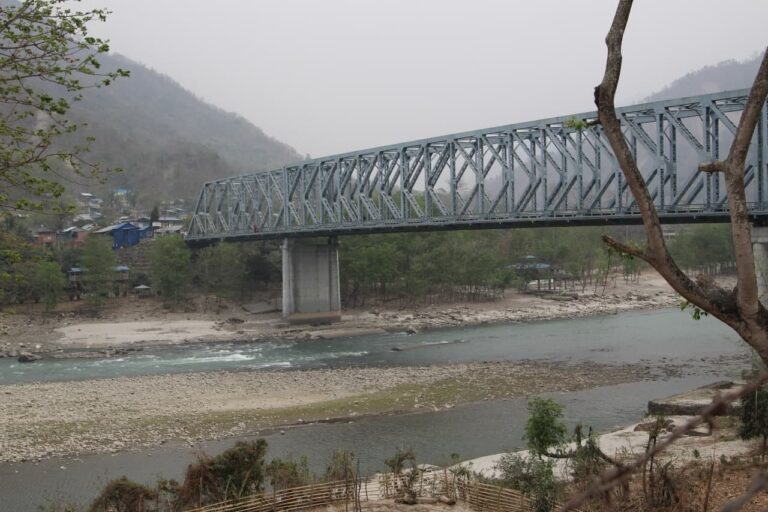
From Tamor, we head up to Dhankuta. Dhankuta is a famous place – it served as the headquarters for the Eastern Development Region for many decades. The place’s produce too is very famous – for example its oranges. However, up in the hills, we realise that farmers are shifting to other crops from oranges – mainly avocados, kiwi and dragon fruits. Recently Dhankuta was also declared the country’s avocado capital.
Nevertheless, remnants of Dhankuta being an orange town is still there – for example, we passed beautiful streets painted in bright orange that made quite an impressionable view.
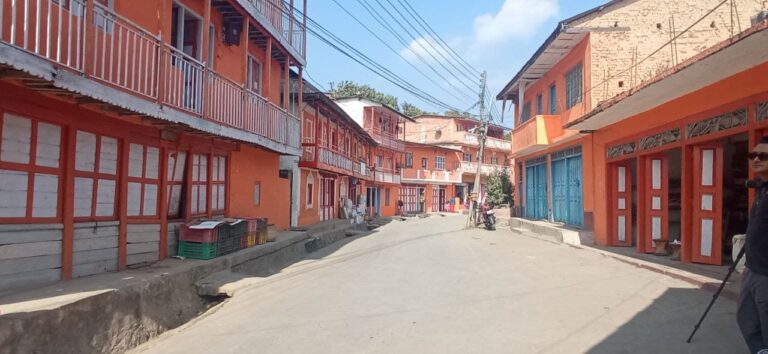
From Dhankuta, we headed upward towards Hile. Meandering roads and wide valleys were a regular sight – up until we saw a huge Tongba Statue. We had arrived in Hile.
Hile was going to be our stop for the night; however, since we wanted to go all the way to Basantapur, we had a quick lunch at the Gumba Hotel and continued ahead.
Leaving Dhankuta, and passing more scenic hills, rolling gardens, we entered Terhathum. Terhathum is a remote district – but offers scenic splendor which is unparalleled to other districts. Valleys filled with rhododendron (Laligurans) and uninterrupted views of the majestic Himalayas; the district is quite a sight for those desiring an authentic Nepali hilly experience.
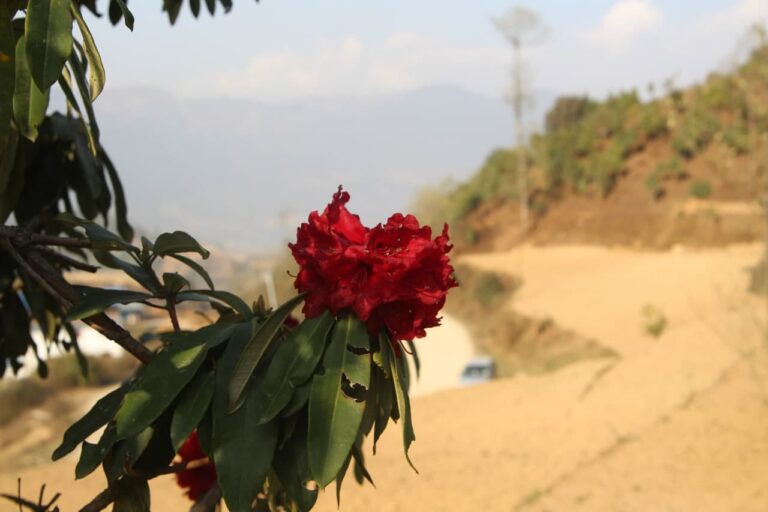
Basantapur is a bustling hilly town in Terhathum – we sat down to enjoy another cup of tea and the crisp hilly air.
From Basantapur, we returned to Hile – through the same meandering roads. In the horizon, the sun was setting illuminating the hills in a bright orangish hue. During our return, father shared another interesting story – of how, there used to be dacoits during his day.
“At night?” I asked inquisitively.
“No, during broad day light”, he answered.
Pointing to the jungle, he said, “We had to pass through this dense jungle. It wasn’t heavily frequented, and during the festivals, dacoits knew service holders would be returning to the hills after pocketing their salaries. The dacoits would target them. Once, mum and my brother encountered some dacoits. They managed to flee, but I remember brother Ganu and mother talking about it for ages even after – a special memory they shared”.
My father has lost both – his brother and his mother. Perhaps that was his way of remembering them – through stories. I think I also noticed a certain pain in his voice – or it could be just me. Nevertheless, there was silence in the car for a certain period of time following the anecdote.
Just around the time the sun was setting, we reached Hile – our hotel was perched atop a small hill. It was windy outside, and we took shelter inside the hotel. Wide windows offered a beautiful view – we enjoyed a nice warm dinner, and settled in for the night.
Back to Dharan:
The next morning, we enjoyed a leisurely breakfast, and then made along the way back to Dharan. It was an uneventful journey – the same roads, the same trees, and the same houses – I will have to travel to Dhankuta sometime again this year itself. And probably more in my lifetime – however, the journey will never be the same.
Just like the journey reminded my father of his memories, I, too when travelling through the winding roads will remember this particular journey. I too have one more memory to share with my family members – of my ride with my parents to Basantapur.
